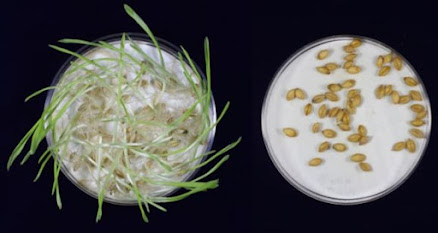 |
| Branching nerve fibers (red) stretch across the mouse iris. Scientists have now built the first cell-by-cell map of this eye tissue. Credit: J. Wang |
A cell-by-cell map of the mouse iris lays the foundation to study eye disorders and engineer cell therapies to replace damaged eye tissue.
If vision science were a movie, the iris would be a supporting actor. It doesn’t get as much limelight as the retina, the eye’s light-sensing tissue. And it’s not as high-profile as the lens, which can cloud with cataracts as people age.
Though the iris – the colorful tissue that rings the pupil – comes in a rainbow of showy shades, for most scientists, “it was not the main attraction in the eye,” says Jeremy Nathans, a Howard Hughes Medical Institute Investigator at Johns Hopkins University School of Medicine. In fact, he has spent most of his career studying the molecular biology of the retina.
“The basic biology of the iris had kind of languished,” Nathans says. Not anymore. He and his colleagues Jie Wang and Amir Rattner have now developed a high-resolution map of the mouse iris that distinguishes individual cells by the activity of their genes. The trio was motivated by the beauty of the iris, the diversity of iris structure in different animals, and its importance for vision, Nathans says.
journal eLife. The researchers’ cell-by-cell map of the iris could one day help identify genes involved in iris-related eye disorders. The work could also guide engineering of healthy iris cells used to replace diseased cells elsewhere in the eye.
















.jpg)
